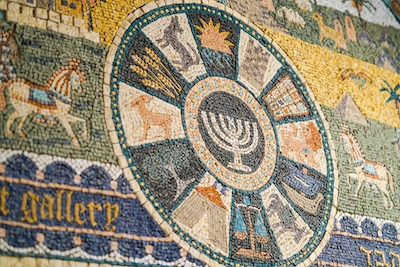Commentary on Parashat Balak, Numbers 22:2-25:9
In Parashat Balak, the Moabite king Balak tries to hire Balaam, a prophet, to curse the Israelite nation. Although the Torah paints a fairly sympathetic portrait of Balaam, the rabbis see him as a sort of anti-Abraham, powerful and malevolent where Abraham was meek and just. Crucially, the rabbis say, to be a student of Abraham and not of Balaam, one must have a “good eye.” (Pirkei Avot 5:19).
The evil eye may be a familiar concept, but what does it mean to have a good eye? Can we really amplify blessing by looking at something the right way?
The ability to see life’s opportunities, benefits or funny sides is generally considered praise-worthy, and this is among many qualities we may highlight as we reflect on a loved one’s passing. As the curtain falls on a particular life story, we tend to construct a narrative that highlights accomplishment, and perhaps even seeks to understand how a person’s most challenging attributes or life experiences were in some deep way connected to their greatest gifts or lessons. This meaning-making is part of the fundamental work of shiva, the intense seven-day period of mourning immediately following death.
As a rabbi, one of my greatest privileges is being asked to offer a eulogy. To speak about someone’s life at their funeral is a powerful responsibility, potentially both comforting and ennobling. Judaism teaches the importance of telling the truth about a person at this time. A Jewish eulogy, or hesped, is meant to be a truthful, reflective evaluation — albeit understandably with an emphasis on a person’s strengths and a little license to praise. Whereas the word eulogy is Greek for “good speech,” implying the necessity to praise, a hesped is supposed to be accurate.

Help us keep Jewish knowledge accessible to millions of people around the world.
Your donation to My Jewish Learning fuels endless journeys of Jewish discovery. With your help, My Jewish Learning can continue to provide nonstop opportunities for learning, connection and growth.
Interestingly, the classical terminology for a funeral is chesed shel emet, literally “the kindness of truth.” Burying the dead is seen as the truest kindness because it cannot be directly repaid. However, the phrase itself points to the kindness, sometimes subtle or only apparent in the longer term, which is invested in saying what is true. That truth includes the way we feel at losing a family member or friend. The act of grieving is archetypal, universal. This is perhaps why we see its first appearance in the Torah when our forefather Abraham mourns our foremother Sarah. (Genesis 23:2)
When I prepare a hesped, I meet with family and other loved ones to learn more about the deceased. A distinct sense of the person usually emerges quickly, defined by their most active and impactful qualities. Although some forceful personalities can be a bit too forceful, for the most part it is these people’s strengths, their generosities and excellences, that stand out. A piece of Torah will frequently come to me as I listen, a reflection of this value in traditional language that often becomes the start or close of the hesped. To see a person’s life exemplifying the expression of a Torah teaching is a beautiful thing.
Oddly, even as they condemn him for his apparently negative perspective, the rabbis see little good in Balaam. The Torah hints at his culpability in trying to seduce the Israelites into licentiousness and idolatry, and the sages ascribe to him not only an evil eye but a haughty spirit and rapacious appetite. But I have often felt for Balaam, who seems to be doing his best to act in integrity and speak the truth. Balaam twice tells the king’s emissaries that if hired, he will only be able to speak the words God gives him. Three times he ends up blessing the people Balak wants cursed. What is this if not submission to God’s will, courage in refuting secular power, and spiritual integrity?
Balaam, like most of us, is a complicated character. But in negating or omitting his strengths, do we not, ironically, fall short of being disciples of our father Abraham, who taught us not only that we must mourn, but to do so with a good eye?
This article initially appeared in My Jewish Learning’s Reading Torah Through Grief newsletter on July 20, 2024. To sign up to receive this newsletter each week in your inbox, click here.
Looking for a way to say Mourner’s Kaddish in a minyan? My Jewish Learning’s daily online minyan gives mourners and others an opportunity to say Kaddish in community and learn from leading rabbis.




